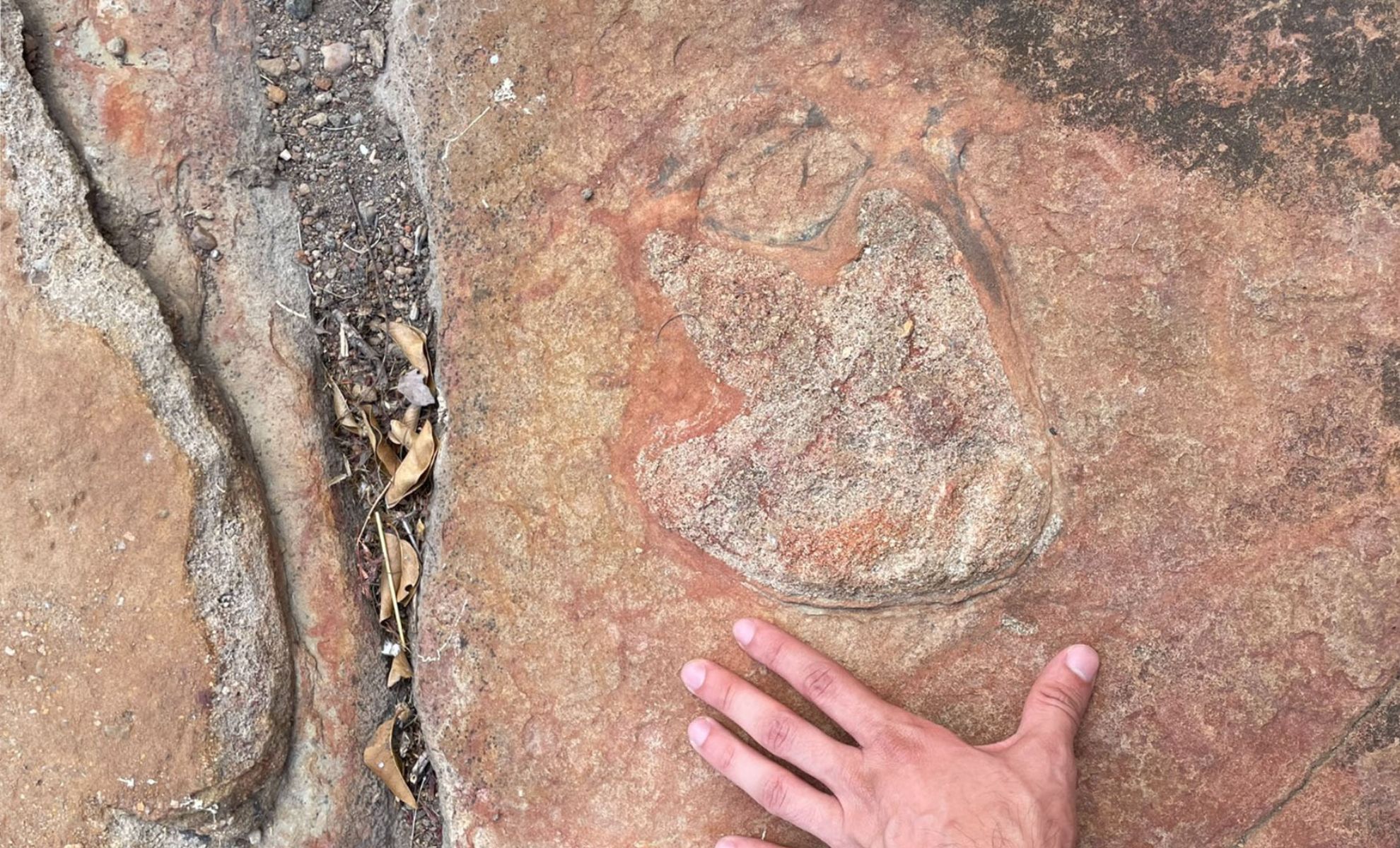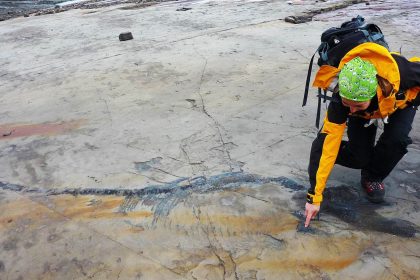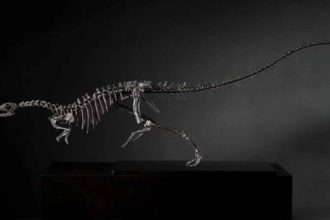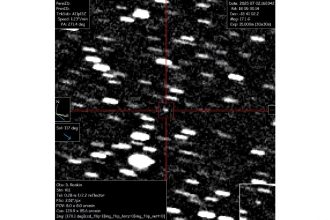In the secluded agricultural area of Serrote do Letreiro in Paraíba, Eastern Brazil, a fascinating archaeological and paleontological discovery has been made. Following drone-led surveys, a site originally studied in 1975 has revealed a series of petroglyphs—stone carvings estimated to be as much as 9,000 years old—strategically located next to dinosaur footprints. This revelation is providing new insights into how early humans interacted with, or interpreted, the remnants of a vastly older era.
A Blend of Ancient Art and Dinosaurs
The dinosaur footprints, dating back to the Cretaceous Period around 66 million years ago, lie just inches away from the complex carvings. Some of the petroglyphs have been found a mere two to four inches from the fossilized tracks, suggesting intentional placement.
“The individuals who crafted the petroglyphs were acutely aware of the footprints, likely selecting the location precisely because of them,” said Leonardo Troiano, an archaeologist associated with Brazil’s National Institute of Historic and Artistic Heritage. The research team believes this points to an intentional engagement by ancient peoples with these prehistoric remnants.
The area is thought to have been inhabited by small semi-nomadic groups of hunters and gatherers between 9,400 and 2,620 years ago, according to archaeological dating. While the varying styles of rock art imply contributions from multiple creators over time, the carvings all seem to revolve around the dinosaur tracks, indicating a shared recognition of their significance or symbolism.
Cultural Significance Embedded in Stone
The implications of this discovery extend far beyond coincidence. The Coordinator of Cooperation and Promotion at Brazil’s National Historic and Artistic Heritage Institute remarked that the petroglyphs “reveal a deep reverence for fossil tracks among Brazil’s ancient, indigenous communities.” These engravings may have served not just a decorative purpose but could embody a cultural or spiritual connection to the landscape and its prehistoric past.
Troiano emphasized the importance of this unique site, stating that it “bridges ancestral symbols with the fossil record” and “highlights the connection between native people and fossils.” This exceptional intersection of archaeology and paleontology deepens our understanding of how ancient societies perceived their environment, time, and their existing role within it.
Collaborative Efforts Combining New Technology and Old Stories
The project involves a multidisciplinary team led by Troiano, in partnership with paleontologists Aline Marcele Ghilardi and Tito Aureliano, alongside archaeologist Heloisa Bitú. The team is proud of their findings, which not only further academic research but also help to safeguard a vital piece of Brazil’s cultural legacy.
“This site is evidence of our species’ journey and the ongoing human engagement with the natural world and its fossil record,” Troiano commented. With Brazil housing one of the richest fossil repositories on the planet, the Serrote do Letreiro site emerges as a valuable aspect of our shared cultural heritage.












